Uncategorized
DJI Mini 3 Pro vs. Mini 2 vs. Mavic Air 2
Hi everyone,
The DJI Mini 3 Pro is the latest and greatest coming out of the DJI Mini series. It maintains the lightweight design synonymous with the Mini series, remaining under 249 g. However, its imaging system, flight performance, and intelligent features have all seen comprehensive upgrades making it more beginner-friendly than ever. This article will take Kenyan users through these upgrades and give you a side-by-side comparison to see how it matches up against Mini 2 and Mavic Air 2.
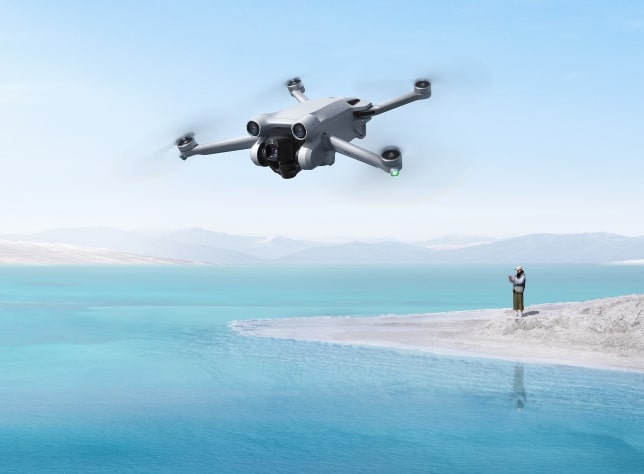
Appearance & Design

The DJI Mini series is built around the idea of being lightweight and portable. Like DJI Mini 2, DJI Mini 3 Pro weighs less than 249 g. This weight is significant because it complies with laws and regulations in most countries, so no registration or training is required. If you are a frequent traveler, Mini series drones can save you tedious processes and formalities. The compact size makes them highly portable and easy to fit in your bag. Set off on an adventure and be ready to capture unique moments.
When it comes to appearance and design, DJI Mini 3 Pro and DJI Mini 2 undoubtedly have the edge given their practicality. They are ideal for anyone who values portability and convenience above all else.
Image Quality
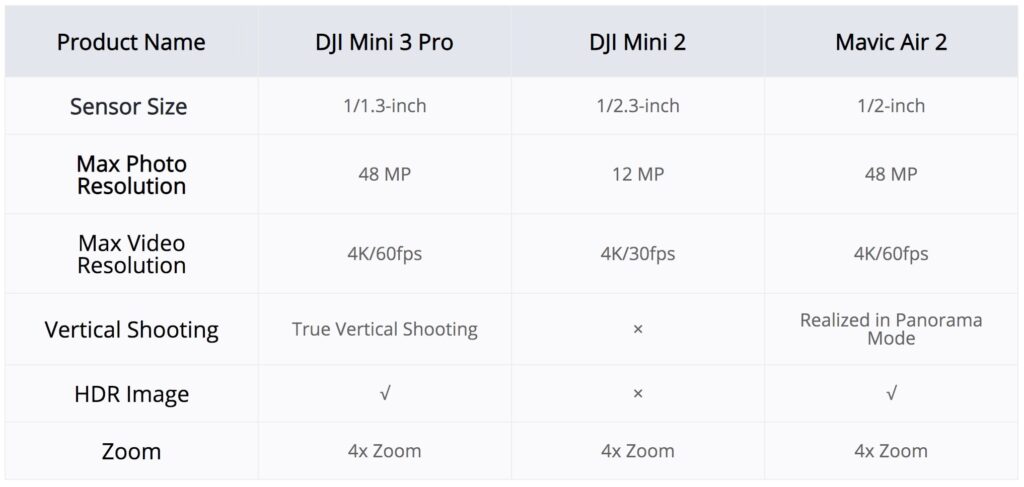
Image quality is always at the core of camera drones. DJI Mini 3 Pro has the largest sensor of the three, at 1/1.3 inches. The larger the sensor, the more information can be obtained, ultimately resulting in higher image quality. Details can be seen clearly, even on large screens.
Both DJI Mini 3 Pro and Mavic Air 2 can shoot 48MP photos, 4K/60fps video, and 4K HDR images. This is a level above DJI Mini 2. And this is most apparent when shooting in challenging light conditions. Day or night, both camera systems can manage proper brightness and produce footage with rich details. Get share-worthy shots instantly, without the need for post-editing. DJI Mini 3 Pro and Mavic Air 2 are the stand-out picks for beginners who want to create cinematic footage effortlessly.

True Vertical Shooting is where DJI Mini 3 Pro has the advantage over the rest. Although Mavic Air 2 supports a form of vertical shooting, it is different from Mini 3 Pro. The panoramic vertical shooting feature of Mavic Air 2 can only be used for taking photos. It does this by splicing multiple images together, which involves digital cropping. DJI Mini 3 Pro’s redesigned gimbal structure allows for an increased rotation range. The camera rotates 90° so the full-sized sensor can shoot without compressing the image quality or cropping.

After exporting a video, you can directly share it to Instagram, TikTok, or other short video platforms. There’s no need for editing because it is already optimized for the vertical video size of each platform. The whole process is effortless and results in higher quality content for your social media.
In terms of image quality, DJI Mini 3 Pro boasts a larger sensor size and True Vertical Shooting, making it the obvious winner in this category.
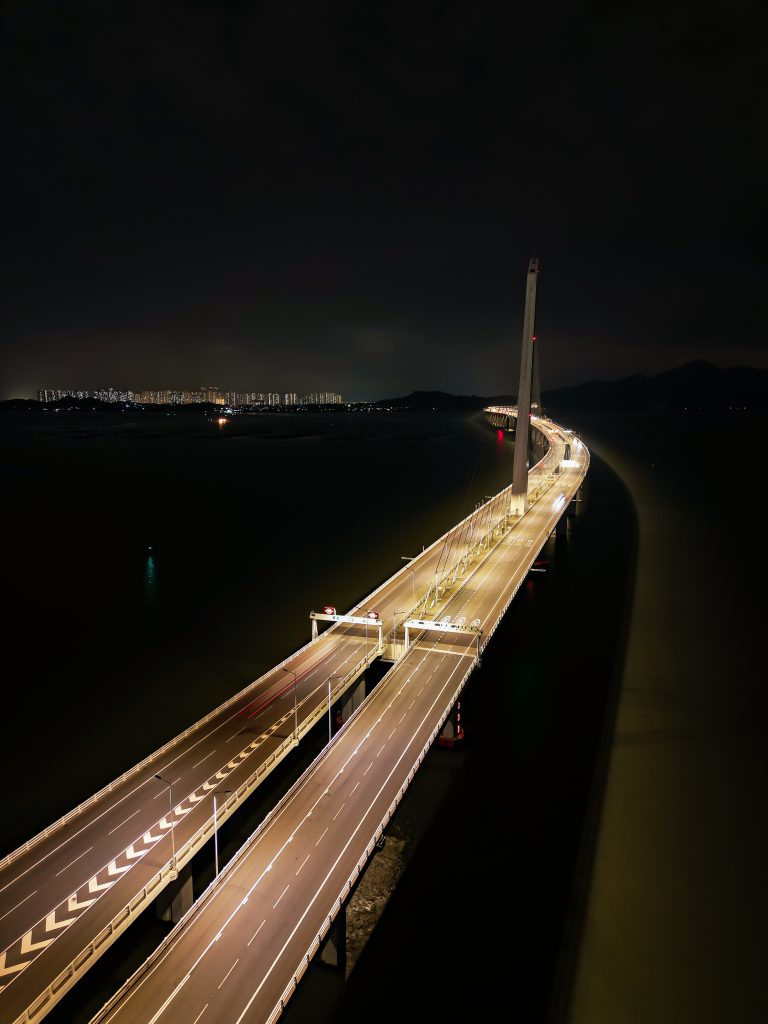
Flight Performance
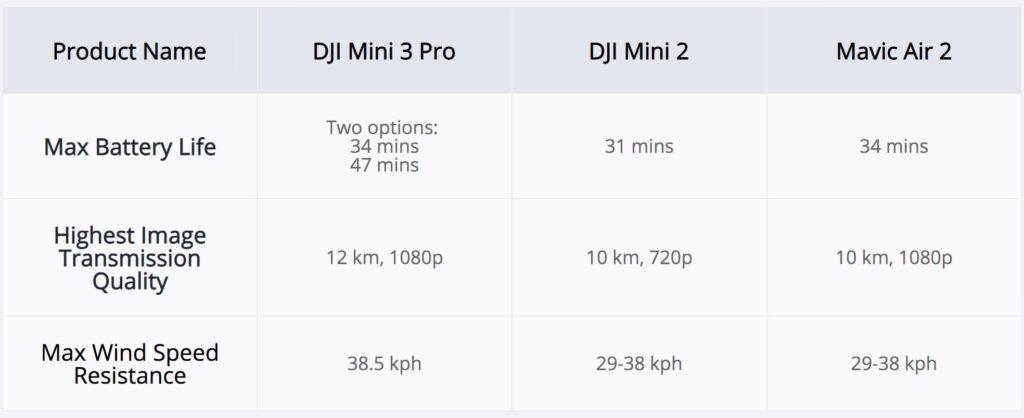
Image quality and design are great, but they mean nothing without flight performance. Let’s dive into which of our drones allows you to fly with the most freedom and safety.
In terms of battery life, DJI Mini 3 Pro is DJI’s first consumer drone to offer two battery options. Users can choose between the standard Intelligent Flight Battery, which offers 34 minutes, and the Intelligent Flight Battery Plus, which provides up to 47 minutes. With this extra 13 minutes, you can explore more of your surroundings, take more time when composing shots, and try out more of the intelligent features. The longer your flight time, the more chance you have of getting that perfect shot.
When it comes to image transmission performance, DJI Mini 3 Pro can fly the farthest of the three drones—stably transmitting high-definition images even at 12 km away.
Although DJI Mini 3 Pro and DJI Mini 2 may be smaller and lighter, their wind speed resistance is no less than that of Mavic Air 2. They can fly stably even in winds of up to 38 kph so that you can record branches, leaves, and water moving in the wind.
If you’re looking for speed, then Mavic Air 2 flies the fastest. It boasts a maximum horizontal flight speed that can reach 19 m/s in Sport Mode. This is higher than the 16 m/s of Mini 3 Pro and Mini 2. Overall, when we look at flight performance, DJI Mini 3 Pro comes out on top again. It offers the longest flight time, a broader image transmission range, and an impressive level of wind resistance.
Beginner-Friendly Features
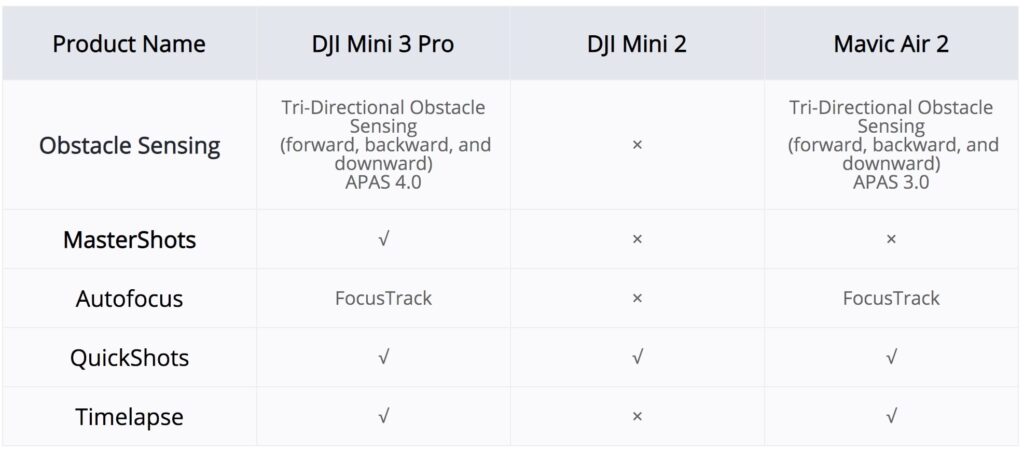
For many beginners of aerial photography, the novelty of flying a drone is often overshadowed by crash anxiety and poor imagery results.

DJI Mini 3 Pro and Mavic Air 2 both support Tri-Directional Obstacle Sensing for added safety. With Mini 3 Pro being the first in its series to do so. It features forward, backward, and downward dual vision sensors and advanced pilot assistance systems (APAS 4.0), so you can fly Mini with more peace of mind than ever. DJI Mini 3 Pro will automatically bypass obstacles in your flight path, greatly relieving flight anxiety and allowing you to focus more on the shot.
MasterShots is a fan-favorite feature that, until now, could only be found on our very top-end drones. With MasterShots, you can create cinematic videos with just a few taps. The drone automatically determines the flight path and camera movements and even handles the music and transitions for you. DJI Mini 3 Pro has this capability, meaning that now, even beginners can create masterpieces in a matter of minutes. And the intelligent features don’t stop there. DJI Mini 3 Pro and Mavic Air 2 also support FocusTrack, QuickShots, and Timelapse. With just a few taps in the app interface, you can add drama to any scene regardless of your skill level.
DJI Mini 3 Pro offers the most well-rounded experience for any first-time flyer. Its improved safety and intuitive features make it ideal for any beginner.

